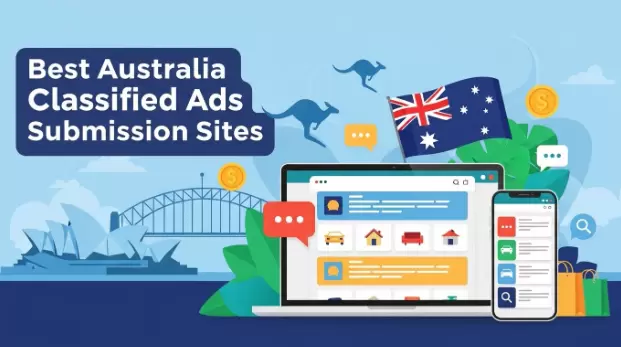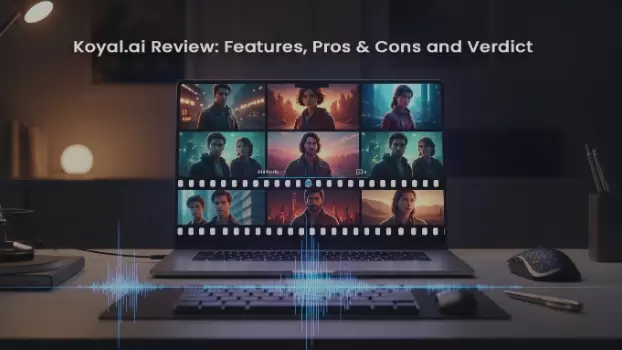Planable is a social media collaboration tool designed around helping social media teams work better and faster together through one easily accessible dashboard. The platform was launched in 2016, by social media managers who wanted to provide marketers with a better way to collaborate, plan, and manage projects across multiple social media accounts.
General Features
What differentiates Planable from other social media management platforms is its collaboration-centric approach. Planable rejects the conventional norms of the industry, and instead focuses on solving the biggest pain points of social media management: the logistics behind content publishing and approval across multiple platforms.
In this sense, Planable streamlines those processes by designing its tool around one simple philosophy: “what you see is what you get”. Meaning that everything a social media team would need to do their work is on a single page.
Here is a brief list of Planable’s main features, which will be covered in greater detail later in the review:
- Integration with Instagram, Facebook, Twitter, LinkedIn, Youtube, Google My Business, and TikTok.
- Content tweaking. Teams can customize content according to the specificities of each social media platform and post/schedule it in bulk, as opposed to doing all this work manually, on each individual platform.
- Multiple ways to view content — List, Grid, Calendar, Feed.
- Intuitive design which mimics the feel and flow of social media. This includes the ability to preview content exactly as it would appear on social media feeds before publishing.
- Multi-level approval system for content.
Set-up & Design
Planable’s focus on mimicking the feel and flow of social media makes the onboarding process easy for new users. The sequence of the onboarding process is as follows:
- Enter company or brand name and add logo.
- Choose between agency and brand.
- Enter the names and email addresses of either team members or associated parties. This is also the place to assign roles (or user permissions): Guest, Writer, Contributor, Approver, Administrator, Owner.
- Add the brand’s social media channels.
- Set approval workflows.
Planable’s guided and straight to the point onboarding process is especially useful for social media managers who don’t want to spend too much time learning all the complexities of a tool right from the start. To reiterate a previous point, its social media-like design also flattens the difficulty curve that other social media tools come with because it’s made to resemble tools that marketers already use.
Integrations
Planable offers integration for seven major social platforms — Facebook, Tikok, Instagram, Twitter, YouTube and Google my Business and LinkedIn. This section will cover the main functionalities of each integration:
- Facebook. Users can plan and collaborate on Facebook posts. Since Facebook Ads are the cornerstone of all successful social media campaigns, teams can also create Facebook Link Ads, add CTAs to thumbnails and change metatitles and descriptions directly in Planable. Users can then post organically, or send them to Facebook Ads Manager.
- TikTok. TikTok’s interface can get a little finicky when it comes to posting videos in bulk. In this respect, users can connect their TikTok profiles to Planable and automate all the busy work — scheduling TikTok videos, writing descriptions and tags and so on.
- Instagram. Planable offers support both for regular posts and Instagram stories. Teams can create, plan, schedule and collaborate on them with Planable. In addition, with Planable’s grid view, content creators can plan and preview their Instagram grids.
- Twitter. Teams can create, plan, schedule and collaborate on their Twitter posts. A nice little touch is that Planable warns users when Twitter’s notoriously low character count has been reached.
- YouTube. Users can schedule and collaborate on YouTube videos. Writing descriptions, inputting hundreds of tags and setting categories across dozens of videos is gruelling work. Planable helps social media teams streamline that busy work as well.
- Google My Business.Users can schedule their Google My Business posts, plan, and create engaging promotional material.
- LinkedIn Planable offers support for content creation, planning and scheduling on LinkedIn.
Scheduling & planning
Planable’s mission is to streamline the content publishing and planning logistics social media managers have to tackle on a day to day basis.
In this sense, Planable brings forward several features that, while present in other similar social media tools, are tweaked and optimized to offer an extra degree of freedom and functionality.
Let’s start with scheduling. It’s a well known fact that social media campaigns have a lot of moving parts, and that they require weeks, if not months, of planning and work until they take fruition.
Therefore, scheduling posts across multiple platforms is, naturally, vital. But scheduling content is just one of many components.
Planable offers multiple ways for social media managers to visualize their campaigns, making it easier for them to adjust and adapt on the go:
- List view. For social media managers who want to quickly do bulk actions on their content such as schedule, approve, or hide multiple posts.
- Feed view. A quick and easy way to visualize content as it would appear on the feed of a particular social media platform, whether Facebook, Instagram, TikTok and other social channels. It’s great for double-checking if, say, Facebook didn’t mess with the aspect ratio of a video, or if a title is misaligned on YouTube.
- Calendar view. Planable features an intuitive and visually appealing social media calendar that allows social media people to tweak and adjust content plans on the go. All it takes is simply dragging and dropping a piece of content to its time slot. Clicking on the post triggers a floating window where users can edit the posts, so there is no need to switch to another window.
- Grid view. Displays content in a grid layout. Instagram grids are notoriously difficult (not to mention finicky) to arrange manually, so this feature is especially useful for social media marketers who want to plan their campaigns around complex Instagram grids.
Real-time collaboration
Planable’s core feature, even more so than the ability to schedule content and preview posts, is real-time collaboration. Feedback and brainstorming sit at the epicenter of social media marketing. But as many creative processes go, they can get messy. The automated onboarding process also ensures that team members can quickly get up to speed and start collaborating without unnecessary delays. Planable acknowledges this problem by moving feedback and brainstorming sessions from endless email chains, bulging Slack threads and [descriptive adjective] spreadsheets into one, easily accessible place.
Feedback is displayed right next to the piece of content in the form of comments and replies. Participants can tag, invite team members or stakeholders to share their thoughts, and mark feedback as resolved. Users can also react to comments.
Planable also ensures clarity in communication and information by allowing users to add attachments to comments — so teams don’t have to share important assets externally.
If a team wants to keep a client’s eye away from an unfinished project but still want to keep things internal, they can do so via the aptly named “internal notes and posts” functionality. They are marked with a yellow colour, so there’s no room for confusion. Internal notes or posts can be created only if a user has been assigned the “client role” in the workspace. As far as collaboration toolsare concerned, Planable delivers in spades.
Approval System
As essential as collaboration is to creating great social media content, there’s no denying that it could lead to some mistakes slipping through the cracks. A half-finished asset being posted on the brand’s Twitter account; a typo-laden piece of copy; or worse, accidentally leaking a post that is part of a secret campaign that’s been months in development. Mistakes happen. And Planable’s approval system is designed to mitigate that risk.
Planable’s comprehensive approval system offers 4 approval settings, each with its own level of security. It’s one of the main pillars of collaboration offered by this solution. There are 4 of them instead of the standard, binary “allowed/not allowed” because Planable acknowledges that each has its own specificities, so it allows them to tailor their approval workflow to their needs.
Here’s a brief overview of the workflows:
- No approval. For flexible teams that don’t need an approval system.
- Optional approval. This is useful for teams that want an approval system in place, but want the flexibility to post the content in case the designated approver is unavailable.
- Required approval. Approval is mandatory for the content to go live.
- Multiple levels of approval. This is a multi-layered process that confers content with an extra degree of security. It establishes a “chain” of approvals — when one designated approval gives their greenlight, the content is pushed further in the approval process to the next decision-maker. And so on until all approvers have given their OK.
Wrap Up
Planable is a highly visual social media tool that emphasises team collaboration and smart marketing automation above all else. With its intuitive UI and design, and integration with the majority of big social networks, it’s an essential tool for social teams that want to eliminate the logistics of content publishing and free up their time on the campaigns themselves.


 Table of Content
Table of Content










